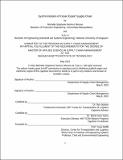Synchronization of Ocean Export Supply Chain
Author(s)
Li, Yulu; Ramírez Moreno, Michelle Stephanie
DownloadSCM32_Ramirez_Li_project.pdf (2.454Mb)
Terms of use
Metadata
Show full item recordAbstract
Ocean freight represents more than 70% of the global trade by volume. Given the price increases in transportation rates, companies are more interested in driving efficiencies and cost optimizations through supply chain synchronization. In this document, synchronization refers to the optimal coordination of transportation costs, inventory, and service level, while considering flexibility and sustainability. This project aims to provide an understanding of key components of synchronization, and ultimately provide a framework that illustrates the collection of supply chain elements to drive synchronization that companies can use to improve their supply chains. In order to do this, we analyzed information about the CPG company using Power BI. We performed a Center of Gravity analysis to propose the best location for the mixing center. We built a Mixed Integer Linear Programming model that provided the optimal volume allocation from the supply warehouses to the mixing center, from the mixing center to the ports of loading, and from the ports of loading to the ports of discharge. The results show that there is an opportunity to reduce 9% of the costs by optimizing the volume allocation and incorporating rail transportation in the inland freight from the supply warehouse to the mixing center and from the mixing center to the ports of loading. This project aims to represent an enabler for companies to run scenarios and decision- making.
Date issued
2022-06-10Keywords
Supply Chain Strategy, Network Design, Transportation
Collections
The following license files are associated with this item: